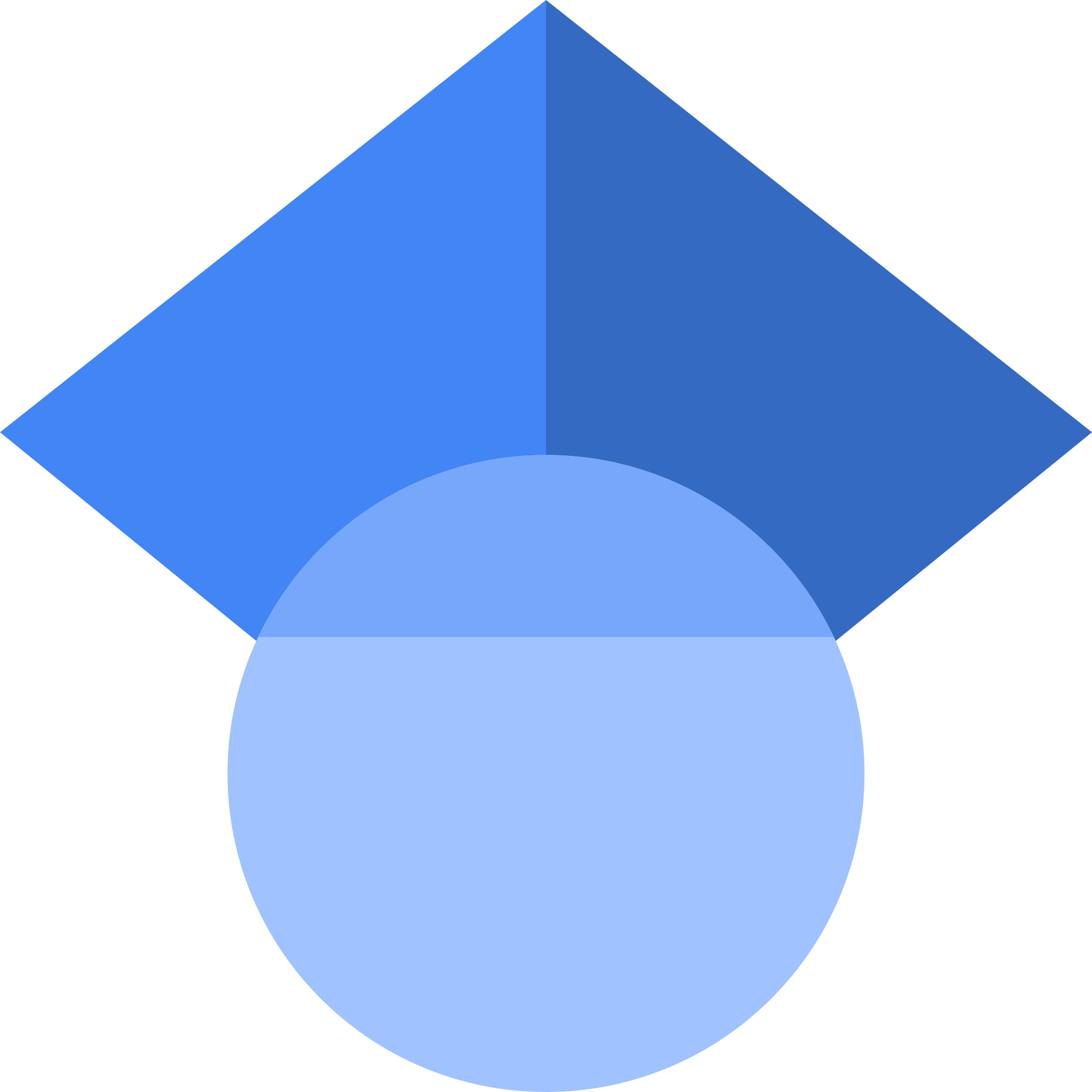Michele Graffeo
Institutional Webpage-CV

Mathematics Area
SISSA
Via Bonomea, 265, 34136 Trieste TS




Algebraic Geometry seminars
Upcoming talks - Schedule
- Friday, March 25th at 16:30
Speaker – Michele Graffeo (SISSA)
Title – How to get your hands dirty with canonical singularities
Abstract: This talk will be a short introduction to the next series of algebraic geometry seminars. It will consist of (approximately) 6 talks about canonical singularities. We will mostly follow Miles Reid's works. The instructive goal will be to learn some techniques useful to tackle singularities. In my seminar, I will show, through examples, where the need to work with singular varieties emerges. - Friday, April 8th at 16:30
Speaker – Ajay Gautam (SISSA)
Title – Introduction to Canonical singularities
Abstract: Canonical singularities appear naturally as singularities in a canonical model of projective varieties. In this talk, I will give a definition of a canonical singularity and try to motivate it with a few examples. - Friday, April 22nd at 16:30
Speaker – Alessandro Nobile (SISSA)
Title – A brief summary of the theory of canonical singularities
Abstract: In this talk we will deepen the theory of canonical singularities and the mathematical tools needed to study and work with them. In particular, the goal of the seminar is twofold: presenting a partial classification of terminal singularities and explaining how canonical singularities reduce (in some sense) to terminal singularities. The treatment will closesly follow Miles Reid's papers "Canonical 3-folds" (M. Reid, Canonical 3-folds, in Journées de géométrie algébrique d'Angers, ed. A. Beauville, Sijthoff and Noordhoff, Alphen 1980, 273--310.) and "YPGtCS" (M. Reid, Young person's guide to canonical singularities, in Algebraic Geometry, Bowdoin 1985, ed. S. Bloch, Proc. of Symposia in Pure Math. 46, A.M.S. (1987), vol. 1, 345--414). - Friday, April 29th at 16:30
Speaker – Dmitrii Rachenkov (SISSA)
Title – Higher direct images for resolutions of normal surface singularities
Abstract: For morphism of surfaces, that is in our context a resolution of normal singularity, there is a pushforward in the categories of coherent sheaves. The right derived functors of the pushforward, that are also called higher direct images, take part in the definition of rational singularities: the first derived functor should be equal to zero.
In the talk I am going to discuss some properties of higher direct images for the surface case and calculate one example. - Friday, May 6th at 16:30
Speaker – Sohaib Khalid (SISSA)
Title – Rational surface singularities
Abstract: Picking up the thread from last week, we will give another (more numerical) characterisation of rational surface singularities. We will then see how this, combined with the Artin Contraction Theorem (a slight generalisation of the classical Castelnuovo Contraction Theorem) can often reduce the study of rational surface singularities to simply keeping track of the combinatorics of the exceptional locus of a resolution. We will exhibit this phenomenon in the elegant case of Du Val singularities. If time permits, we will sketch the beautiful connection of Du Val singularities with regular solids in three dimensions, including the Platonic solids that have been studied since Classical Antiquity. - Friday, May 13th at 16:30
Speaker – Umar Shahzad (SISSA)
Title – Toric methos for hyperquotient singularities
Abstract: Given a hypersurface X along with a suitable action of a cyclic group of r-th-roots of unity G on X, a hypersurface singularity P in X can be regarded as hyperquotient singularity Q in the quotient space Y=X/G. The goal of this talk is to understand the nature of such singularities, i.e. canonical or terminal, etc. In particular, we will establish the fact that such information is encoded in some combinatorial data associated with the group G and newton polyhedron of the polynomial f which defines X. - Friday, May 20th at 16:30
Speaker – Hayato Morimura (SISSA)
Title – Reduced Tate--Shafarevich group
Abstract: In this talk, we introduce our prototype of "moduli detector" via derived categories. Generic elliptic 3-folds are elliptic fibration with certain properties shared by general members of many families of elliptic 3-folds. The smooth part of a generic elliptic fibration is classified by the Tate--Shafarevich group. Recently, we prove a reconstruction theorem for generic elliptic 3-folds with the same relative Jacobian. Namely, two generic elliptic 3-folds are linear derived-equivalent if and only if one of them is a fine relative moduli space of the other of semistable sheaves of rank 1 with an appropriate degree. It follows that the quotient set of the Tate--Shafarevich group by a natural equivalence relation classifies derived categories of generic elliptic 3-folds with the same relative Jacobian up to linear equivalence. The reconstruction problem will be more interesting for Calabi--Yau 3-folds from the viewpoint of mirror symmetry. In this case, we prove further that linear derived-equivalent generic elliptic 3-folds share the same relative Jacobian. Hence via a linear derived equivalence of generic elliptic Calabi--Yau 3-folds one always find a fine relative moduli space of semistable sheaves of rank 1 with an appropriate degree. Here, the quotient set of the Tate--Shafarevich gets reduced to the quotient set of the Brauer group of the relative Jacobian by the induced equivalence relation, to classify derived categories of generic elliptic Calabi--Yau 3-folds up to linear equivalence. Considering the goal of this series of seminors, I will try to show how birational geometry plays a role in our study. - Friday, May 27th at 16:30
Speaker – Solomiya Mizyuk (SISSA)
Title – On the minimal models of surfaces via Mori theory
Abstract: We discuss the classification of surfaces via the minimal model program. In particular, we state and give some ideas of the proof of the rationality, cone, and contraction theorems. This enables us to conclude that each nonsingular projective surface is birational either to a surface with a nef canonical class, to the projective plane, or to a ruled surface. We mainly follow chapter D of https://arxiv.org/pdf/alg-geom/9602006.pdf - Friday, June 10th at 16:30
Speaker – Rafael Holanda (Universidade Federal da Paraìba)
Title – A Mayer-Vietoris-type spectral sequence
Abstract: In order to investigate the interplay between (multigraded) Castelnuovo-Mumford regularity with respect to certain homogeneous finitely generated ideals, we study Cech cohomology (at both sheaf and ring levels) with respect to products of finitely generated ideals. This leads us to construct a spectral sequence which relates local or sheaf cohomologies supported in different ideals and degenerates in the well-known Mayer-Vietoris long exact sequence. In this talk, we invoke general facts about Cech cohomology, build our spectral sequence, and comment on a possible relation with a Lyubeznik spectral sequence and regularity. It is an ongoing joint work with Marc Chardin (Sorbonne Université) and José Naéliton (UFPB). - Wednesday, June 22th at 16:30
Speaker – Barbara Fantechi (SISSA)
Title – Smoothability of non normal stable Gorenstein Godeaux surfaces
Abstract: This is joint work with Marco Franciosi and Rita Pardini.
Godeaux surfaces, with K^2=1 and p_g=q=0, are the (complex projective) surfaces of general type with the smallest possible invariants. A complete classification, i.e. an understanding of their moduli space, has been an open problem for many decades.
The KSBA (after Kollár, Sheperd-Barron and Alexeev) compactification of the moduli includes so called stable surfaces. Franciosi, Pardini and Rollenske classified all such surfaces in the boundary (i.e., not normal) which are Gorenstein (i.e., not too singular).
The simplest possible singularities are semi-smooth, ie a double curve with finitely many pinch points.
We prove that stable Godeaux semi-smooth surfaces corresponds to a point in the moduli which is nonsingular of the expected dimension 8. We expect that the methods used (which include classical and recent infinitesimal deformation theory, as well as algebraic stacks and the cotangent complex) can be applied to other cases, and to more general moduli as well.